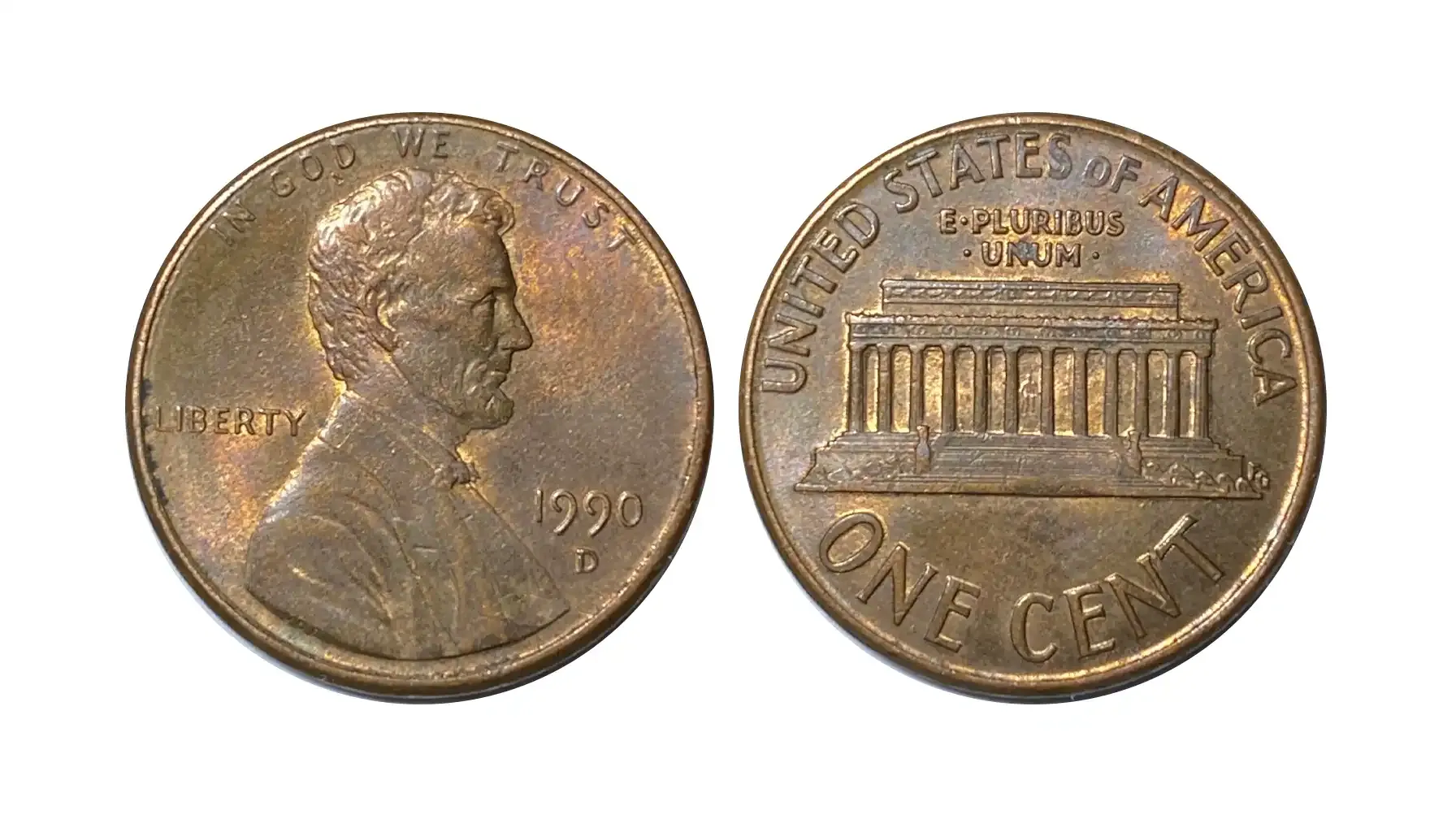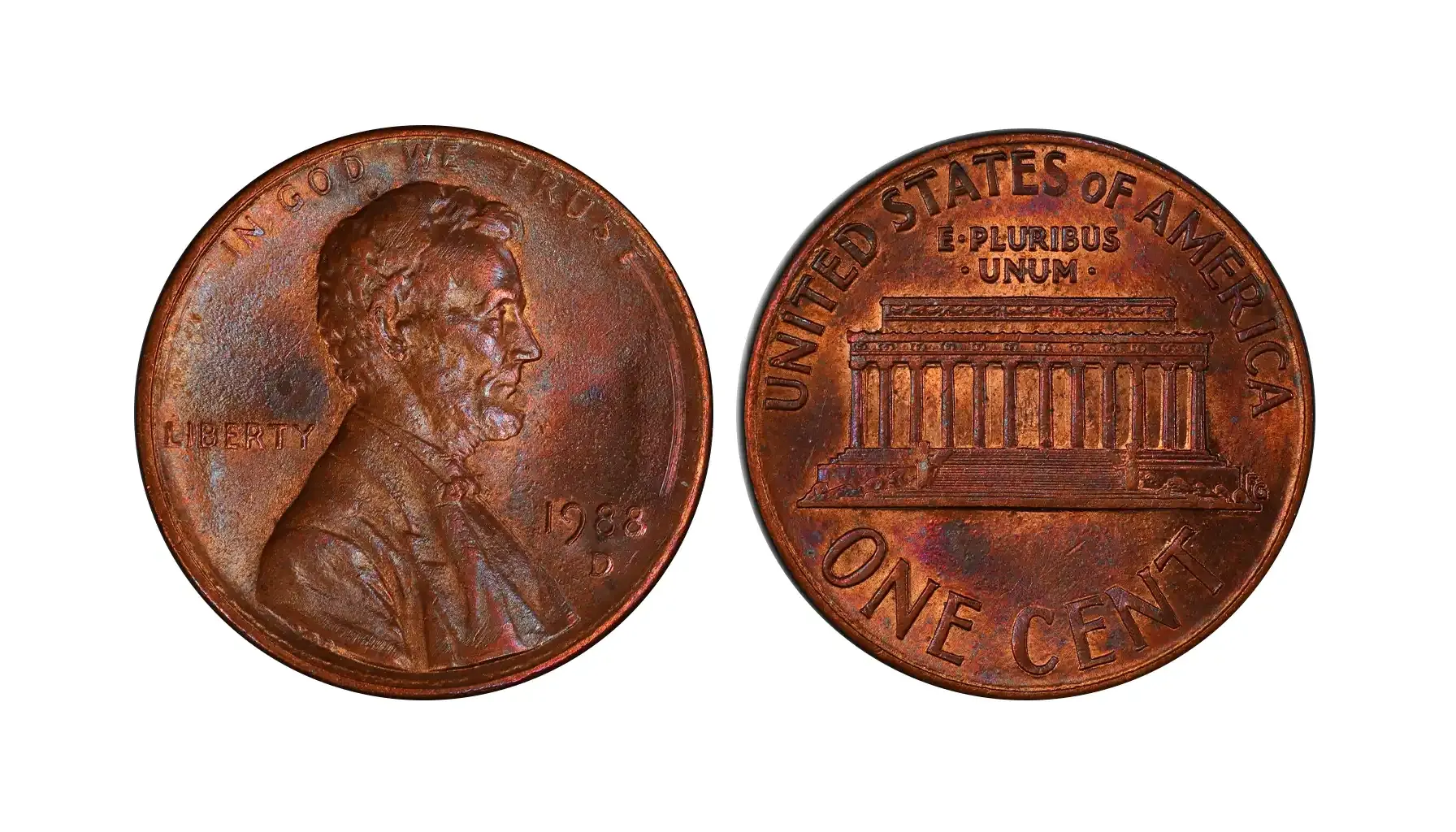Contents:
How many fascinating stories, myths, and legends may lie behind the beautiful coin gleaming in your hand? Have you ever thought about the early US coins and the events that had to unfold for people to finally have a convenient and reliable means of payment?
American numismatics is full of fascinating stories, and for many people, collecting is an opportunity to feel the past and learn how the financial system of the country was formed. Let us explore US colonial coins, check coin value, and reveal what it was like at the beginning of the US formation.
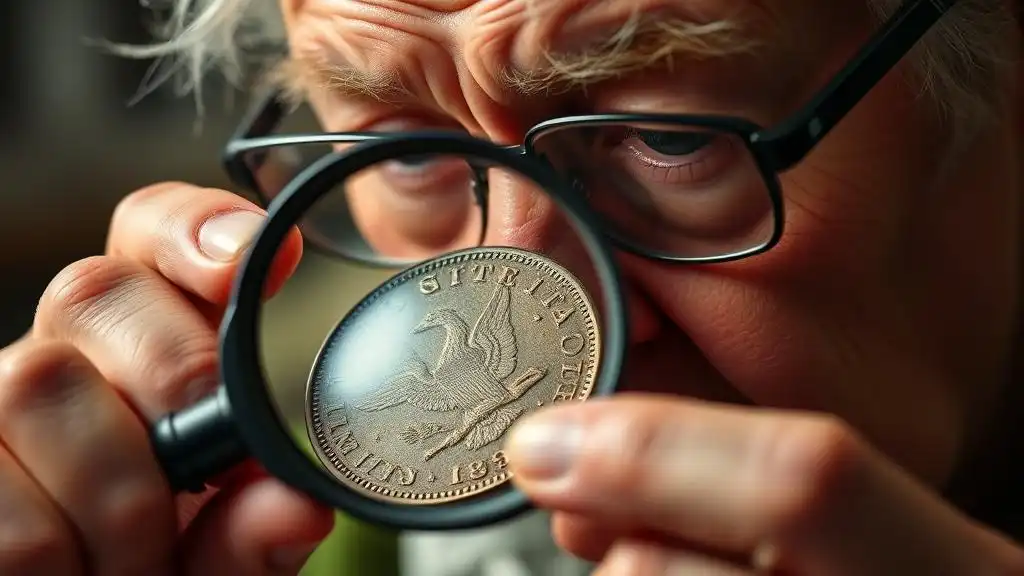
What Was Used Before Official Coins Appeared
Although the United States declared its independence in 1776, it took many years before the nation established its own coinage system. The first US coins appeared only in 1792 with the adoption of the Coinage Act. But what other objects and foreign coins served as early US currency before? Colonial economies could not rely on just one form of money, and each region used what it had at its disposal.
Some examples of currency included:
Currency | Used By | Interesting Fact |
Spanish Real | Traders | It was often cut into 8 pieces for convenient payments. |
Tobacco | Virginia planters | Tobacco was officially used as currency until the 1700s. |
British pound | Official currency until 1776 | It was used as a standard for payment to foreigners. |
Rum | Sailors and harbor workers | Used not only for payments, but also for payoffs. |
Dutch Guilder | Merchants in New York | In the Dutch colonies, it was considered a reliable coin. |
Fur | Frontier settlers and traders | Beaver furs were one of the most valuable assets. |
Thus, silver and gold coins from various European countries used in circulation further became the basis for the first American coins and their denominations.
American Colonial Coins and Currency of Other Forms
Although each colony had its own means of payment, some options might have been considered relatively common (or, at least, widespread). In fact, there were different types of colonial era US coins, namely Massachusetts Silver Coins, Pre-1776 States releases, creations of French colonies, Proposed National Issues, Washington Pieces, and more. Here are particular instances to look for:
New England Silver Coins
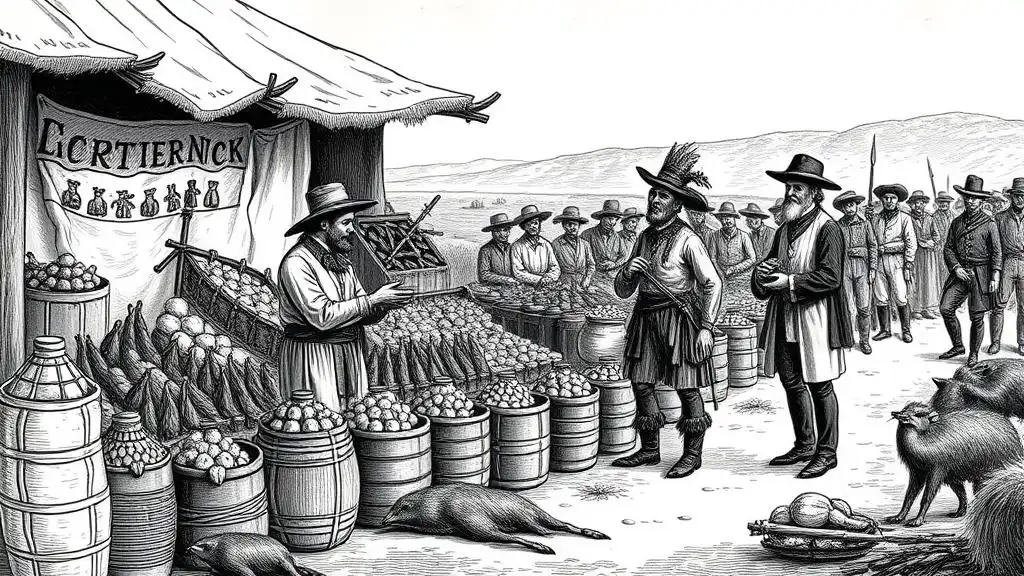
Years of Mintage: 1652
Denomination: Pine Tree Shilling, Sixpence, Threepence
Estimated Value: up to $2,520,000
Composition: 100% silver
Design Features: The earliest silver instances struck in what would become the United States are extremely rare and historically significant. The first issues, minted in 1652 in the Massachusetts Bay Colony, were hand-punched with a minimalist design: one side bore the initials “NE” (for “New England”), while the other displayed the denomination in Roman numerals, i.e., III for threepence, VI for sixpence, and XII for shillings.
New Jersey "St. Patrick" Coins
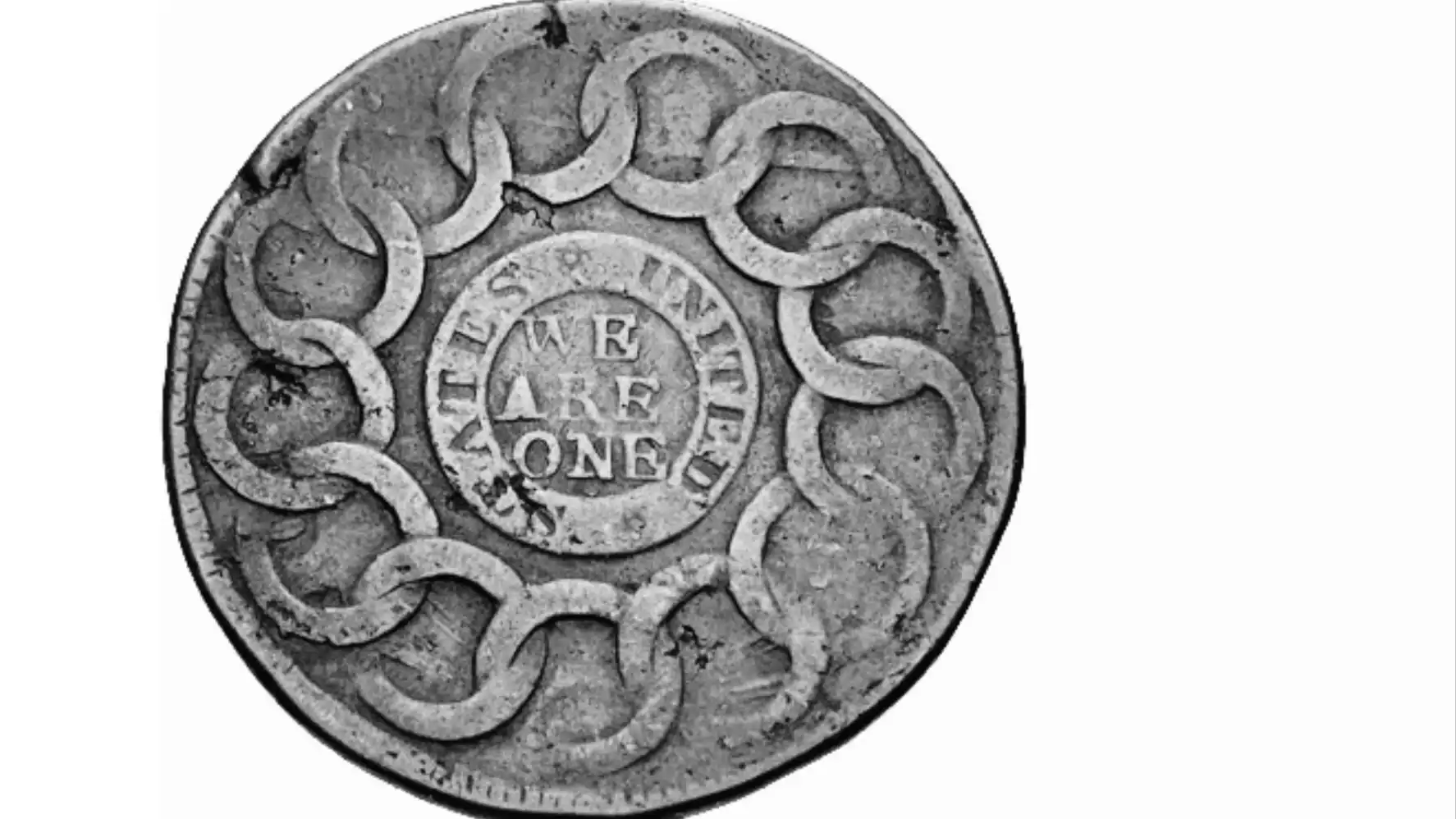
Years of Mintage: 1670s
Denomination: Halfpence, Farthings
Estimated Value: up to $184,000
Composition: Copper
Design Features: The obverse features a crowned monarch (possibly King David or Charles II) kneeling and playing a harp, gazing upward at a floating crown. The reverse varies by denomination:
On the Farthing, St. Patrick is shown driving serpents into the sea.
On the Halfpenny, St. Patrick is depicted standing amid a crowd of people, raising his hand in blessing.
American Plantation Tokens

Years of Mintage: 1688
Denomination: 1/24 Part Reals (Breen), 1/24 Reals (Akers), Farthings, etc.
Estimated Value: up to $32,900
Composition: 97.5% Pure Tin
Design Features: The obverse typically shows a crowned bust of King James II with the inscription “IACOBVS II DEI GRATIA.” The reverse features crowned shields and a harp representing Ireland.
Rosa Americana Coins
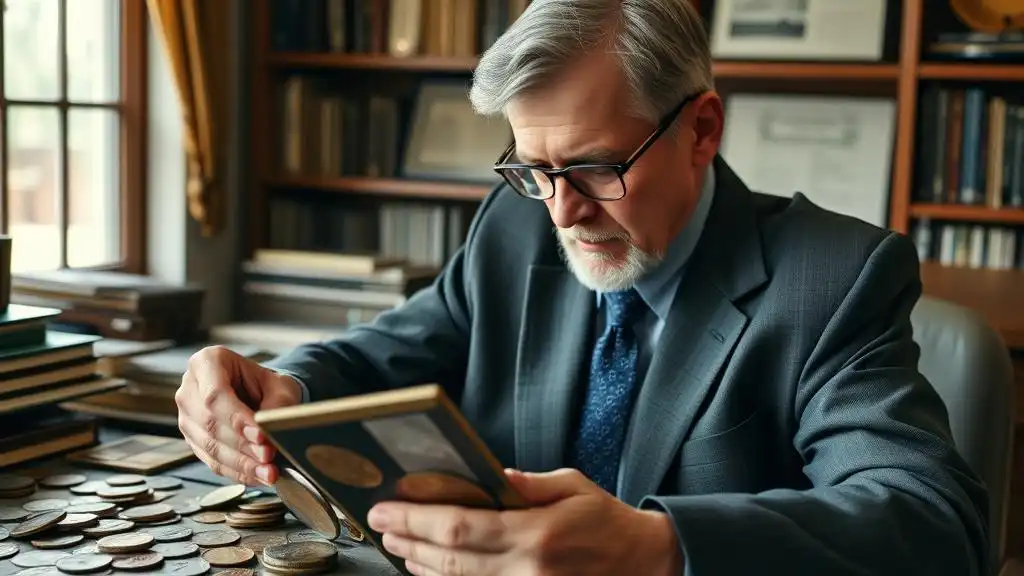
Years of Mintage: 1722-1724
Denomination: Twopence, Pence, and Halfpence
Estimated Value: up to $28,800
Composition: Bath Metal
Design Features: The Rosa Americana series was minted under the authority of the British government to facilitate trade in the American colonies, with the obverse featuring the right-facing profile of King George I of England and the reverse displaying a crown on a rose.
Sou
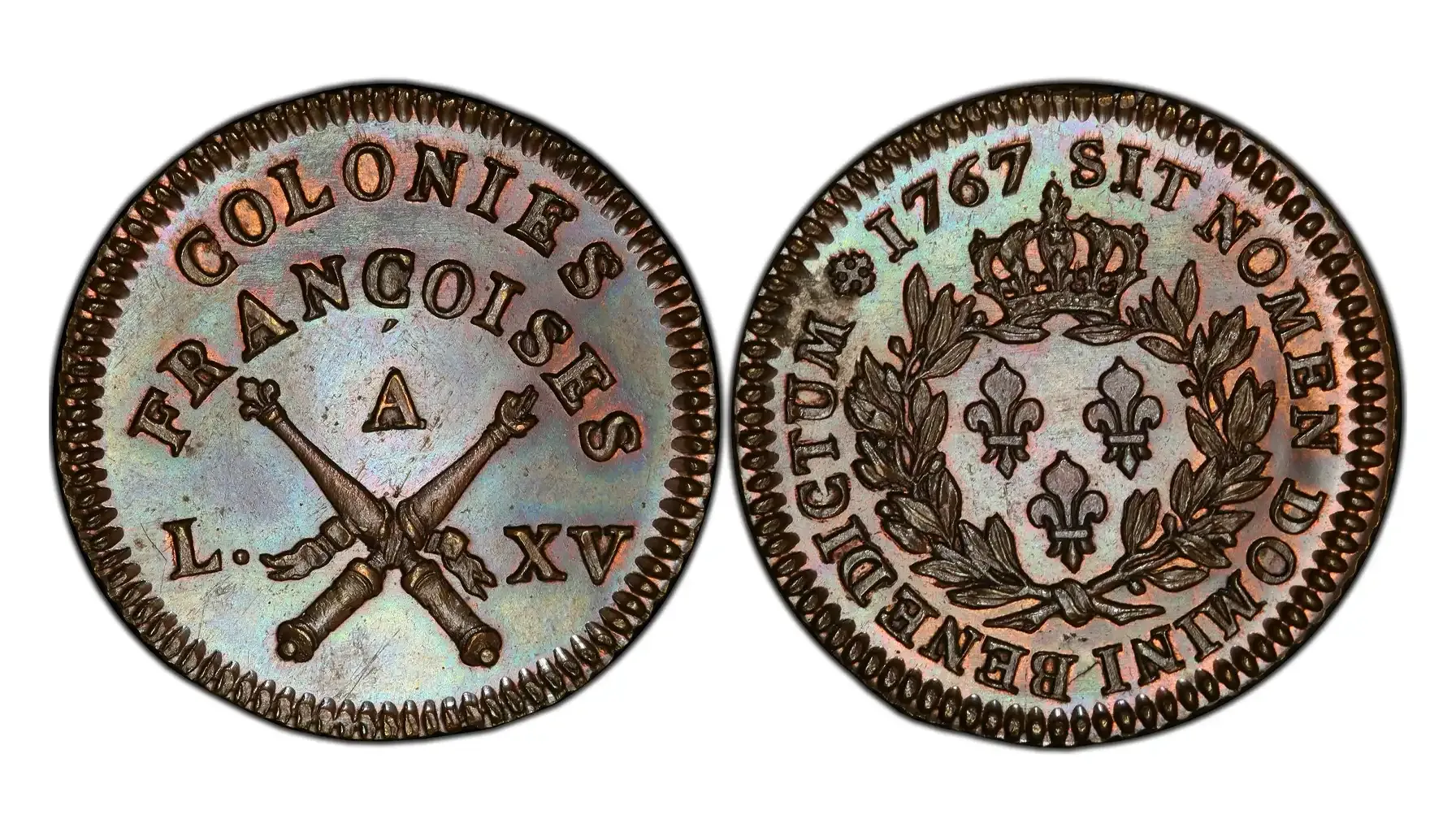
Years of Mintage: 1670-1764 (approximately)
Denomination: Often equivalent to a few pennies
Estimated Value: up to $504,000
Composition: Copper or Brass
Design Features: The obverse displays four lines of text in the field, positioned beneath a hand of justice and a scepter fleurdelisé crossed and tied with a ribbon. The reverse features a crowned coat of arms, symbolizing royal authority.
Fugio Cent: The First Official US Coin

The first official coin minted in the US, the Fugio, was issued in 1787, before the adoption of the Constitution. It was named after “fugio”, which means "I run" in Latin. The unusual inscription symbolized the idea that time does not stand still and life is passing quickly.
Description and symbolism of the coin:
The obverse displays sunlight falling on the dial and the inscription “Mind Your Business”.
The reverse illustrates 13 rings connected to each other, symbolizing the original states. Inside the chain was the inscription “We Are One”.
Early United States Coins
1792 Half Disme
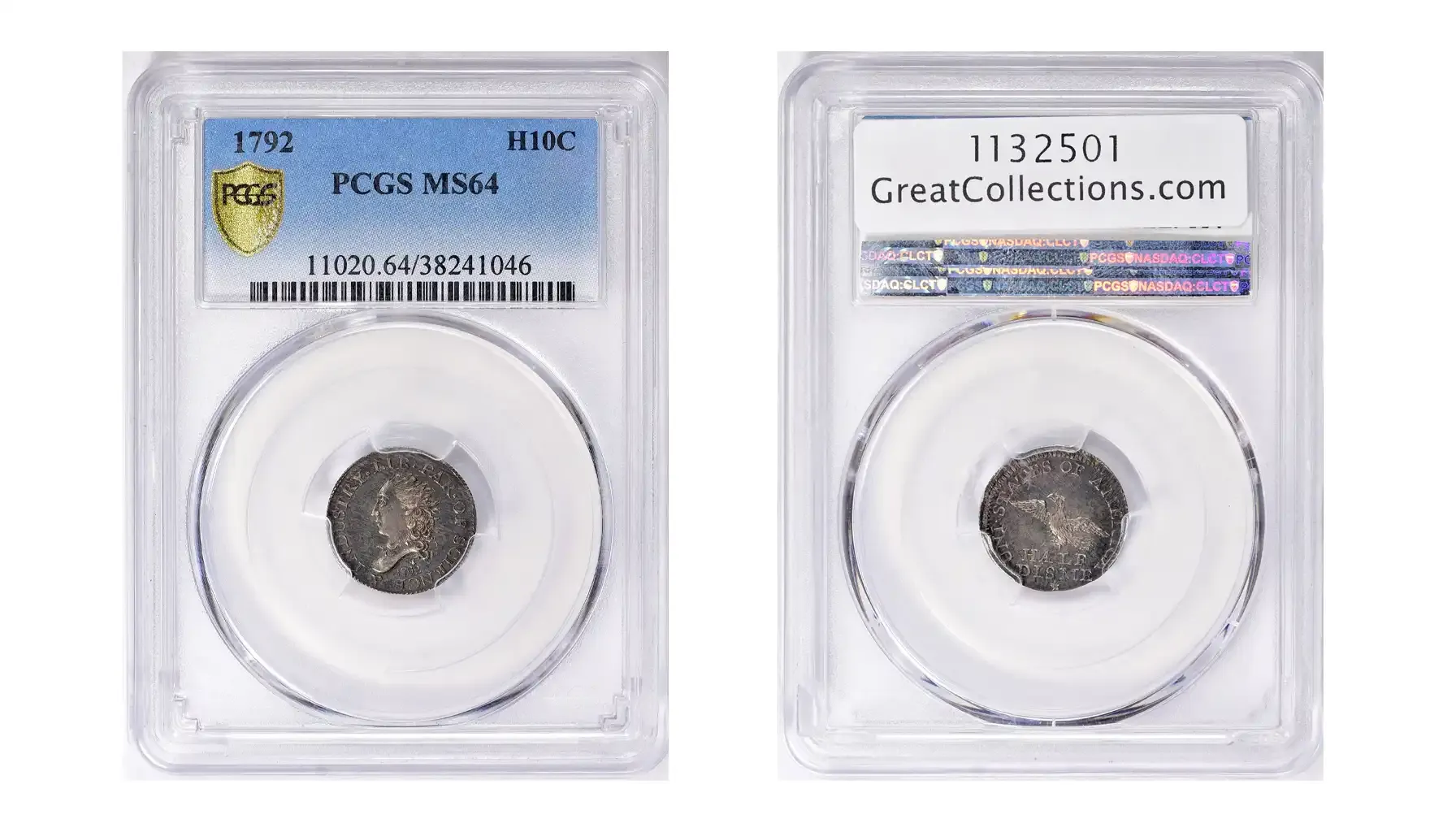
The first coin after the passage of the act was the Half Disme. The coin (with the denomination of 5 cents) was struck in silver and had a small size (approximately 17.5 mm in diameter and weighing about 1.35 grams). The obverse of the coin was decorated with a bust of Liberty, and the reverse depicted an eagle with spread wings.
According to rumors and legends, George and Martha Washington are directly related to the creation of the coins, as the coin was minted from the First Lady's silver jewelry, though there is no direct evidence of this fact.
Related article: The American Innovation Coin.
Further Steps
After 1972, the Mint issued new denominations, e.g., half cent and cent (copper); half disme and disme, quarter, half dollar and dollar (silver); Quarter Eagle - $2.50, Half Eagle - $5, and Eagle - $10 (gold).
Issue | Metal | Design | Features | Estimated Value |
1793 Chain Cent | Copper | Obverse: Bust of Liberty with loose hair Reverse: Chain with 15 rings | The 15-link chain symbolized the union of the states, but quickly attracted criticism (chain=slavery) | $5,000 - $500,000 |
1793 Wreath Cent | Copper | Obverse: Bust of Liberty Reverse: wreath with ribbon | Only a few surviving variants are known | $5,000 - $400,000 |
1794 Liberty Cap Cent | Copper | Obverse: Bust of Liberty in Phrygian cap Reverse: Wreath | One of the best known early types of the 1 cent. | $2,000 - $250,000 |
1794 Flowing Hair Dollar | Silver | Obverse: Liberty with loose hair Reverse: Small Eagle | First United States dollar, limited edition. One of the rarest and most expensive coins ever minted | $200,000 - $10,000,000 |
1795 Eagle ($10) | Gold | Obverse: Liberty with turban Reverse: Eagle with spread wings | The first gold Eagle of the United States. | $50,000 - $3,000,000 |
1796 Draped Bust Quarter Dollar | Silver | Obverse: Bust of Liberty Reverse: Small Eagle | First issue of quarters with the design of a bust of Liberty on the obverse | $10,000 - $500,000 |
1796 Draped Bust Half Dollar | Silver | Obverse: Bust of Liberty Reverse: Small Eagle | One of the earliest half dollars with scarce mintage | $25,000 - $1,000,000 |
1795-1798 Half Eagle ($5) | Gold | Obverse: Liberty with turban Reverse: Small Eagle | One of the first gold coins of the United States | $25,000 - $800,000 |
1804 Dollar | Silver | Obverse: Bust of Liberty Reverse: Eagle with shield | The most famous and one of the rarest coins in the world | $1,000,000 - $10,000,000+ |
Coins Changed History
Colonial American coins tell the story of the development and economic independence of a young country. They are the most valuable and sought-after collectibles due to their unique characteristics, limited circulation, and low mintages.
However, the valuation and identification of any coins requires experience and trusted tools. So, fast-paced collectors may rely on coin dealers or tools like Coin ID Scanner to identify and value coins from all over the world, accessing information in seconds.

